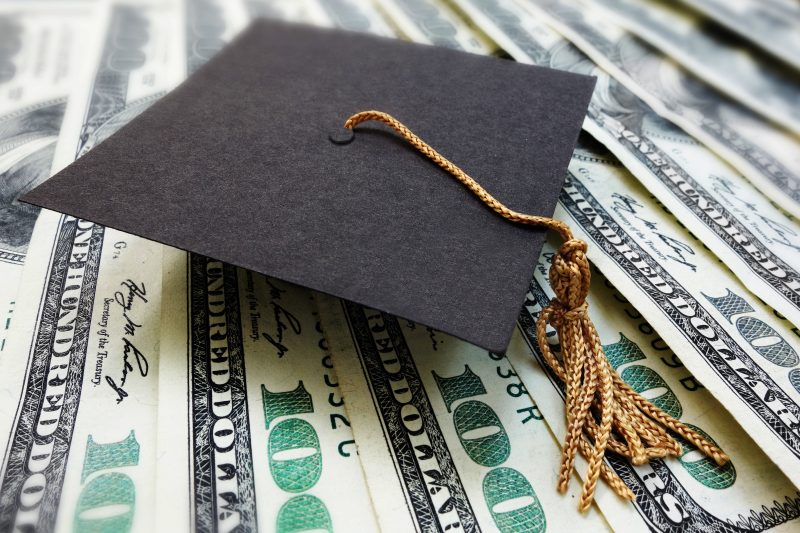In March 2020, as America shut down in response to the COVID-19 pandemic, Congress passed a law suspending federal student loan payments for six months. The payment pause ended up lasting, in effect, for four and a half years. Though well-intentioned, the pause and its repeated extensions may go down as one of the worst mistakes in the history of higher education policy.
Payments effectively resumed in October 2024. Borrowers who miss payments on their loans will now see those delinquencies reported to credit bureaus, with even more serious consequences to come. The Wall Street Journal recently reported that some borrowers who missed payments saw their credit scores plummet by 100 points or more. Borrowers are bewildered. Many say they were unaware that payments had resumed.
It isn’t difficult to understand why. Think about the last few years from the perspective of a moderately-informed borrower.
Your loan servicer suspended your payments in March 2020. You heard the pause might end, but then the federal government extended it eight times. The president announced that he would forgive your loans. The Supreme Court knocked him down. Then the president said he would forgive your loans again, declaring “the Supreme Court blocked me, but it didn’t stop me.” In October 2023, you heard student loan payments were resuming, but you didn’t pay — why would you when forgiveness is still in the cards? And nothing bad happened.
Tens of millions of borrowers paid nothing on their loans for five years. They heard repeatedly they were getting loan forgiveness. Without clear communication from the federal government, it is unsurprising that many wouldn’t know it’s time to pay again.
What’s more, channels of communication have broken down. During the last five years, many borrowers moved or changed their contact information. Because they were not actively paying their loans, many simply forgot to notify their loan servicers about the changes. The Biden administration also actively discouraged servicers from contacting borrowers during the pause. Several loan servicers exited the system, meaning their borrowers are now receiving letters from a new and unfamiliar company — if that company can find them at all.
The results are sobering. Among 34 million borrowers with federally managed loans who were not enrolled in school, just 13 million (38 percent) made an on-time payment in the last 30 days, according to the most recent data. In January, millions of borrowers reached 90 days delinquency on their loans, triggering a negative credit report. Come July, the first borrowers will reach 270 days delinquent and enter default, which could initiate even more serious consequences such as the seizure of tax refunds.
Beyond its enormous fiscal cost ($238 billion), the extended pause allowed borrowers to disengage from the student loan system. The longer the pause went on, the greater the likelihood of severe delinquencies and defaults when payments eventually turned back on. Now that the pause is over, the reckoning has come.
No one wants to be the “bad guy” telling borrowers it’s time to make payments again. But despite inheriting a student loan mess from its predecessor, the Trump administration faces a potentially huge political liability as more and more borrowers fall behind on their debts and see their credit scores drop. The government needs to get ahead of this trend as soon as possible.
First, the administration ought to start a media blitz on the return to repayment. As often as possible, the White House and the Education Department must trumpet the message that payments are due. Officials should lean on colleges to spread the message to their recent graduates. Congress should appropriate extra funding for loan servicers to communicate with borrowers more often, and staff up their call centers to handle the inevitable influx of borrower inquiries.
Second, one-time sweeteners for borrowers to re-engage with the student loan system will help smooth the path back into repayment. Congress could authorize a repayment incentive: borrowers who make three on-time payments would get a $500 credit applied to their loan balances. This would cost money up-front, but it would pay off in the long run: the student loan program hemorrhages billions of dollars every month if borrowers don’t pay.
In the long run, Congress needs to fix the loan program itself. That means hard caps on borrowing and fewer loans to schools where students are unlikely to repay. But while these policies will help avoid similar situations in the future, we still need a solution for the 43 million Americans with loans due today
The payment pause broke the student loan program, and the damage will take a long time to fix. But the Trump administration must take responsibility for cleaning up the mess where the Biden administration failed. Borrowers and taxpayers are counting on them to get it right.
Preston Cooper is a senior fellow at the American Enterprise Institute.

